|
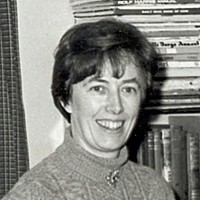 |
Memories of
a happy
family home
by PAT SCHMID
Matron 1957-85 |
FIRST IMPRESSIONS
On arrival, I was shown round by the
deputy, a very pleasant lady who, I learned later, had applied for the
post of matron herself. I stayed overnight in a small bedroom and was
woken at around 6 am by a loud banging coming from the boys’ room. I went
to investigate and discovered the lads busy destroying the drawers in
their room. Although I was not yet appointed, I informed them that this
kind of behaviour was not acceptable and would not be tolerated if I were
matron. No member of staff appeared and it turned out that the matron’s
quarters were downstairs at the other end of the house and the deputy was
non-resident.
I made up my mind that if I was to take charge, there would need to be
some changes made. On entering one of the girls’ bedrooms, I chatted to
the occupants, one of them a girl about 15 years old. “You must be leaving
soon, where are you going and what are you going to do when you leave?” I
asked out of genuine interest. To my horror and surprise, she burst into
floods of tears and confessed she had no idea where she was going or what
she would do, but she was nearly sixteen and had to leave school and
therefore the hostel, the latter being run by the education committee.
There were three other older girls with similar problems unsolved. I
resolved that this would be another matter to which my attention would be
given.
THE BOARD OF GOVERNORS
My interview for the job took place in a
large airy room with windows all round and used as a playroom. It was cut
off from the rest of the house by a long corridor. Six long tables were
placed in an A shape and the applicant, myself, required to sit on a chair
so that questions could be fired from any angle.
I was surprised at the large number of people on the board. The chairman,
a Dr Fielding, introduced himself and his committee. I remember Dr
O’Sullivan, the medical officer, Dr Richardson, the child psychiatrist,
Mrs Amy Burchnell who lived locally, Mr Harboth, the educational
psychologist, a clergyman and a very old lady called Mrs Schwind who
brought us a basket of new laid eggs. There were others, but I cannot
remember their names. Dr Golby was director of education for Kesteven whom
I met later and Dr Fielding was medical officer for Holland County
Council.
THE INTERVIEW
I was asked why I wanted the post of matron
and explained that although my training as a nurse was important to me,
the qualification SRN [State Registered Nurse] was a means to an end as I
had always wanted to work with children and had strong ideas on how they
should be treated. I was almost 27 years old at this time, my husband
being three years my senior, and had been married and divorced, and now
had a five-year-old stepdaughter named Pauline. The clergyman on the board
noted that I had done a lot in a short time and I was then asked if I
intended to have more children. I replied that it was possible although I
had no immediate plans. I had other experience working with children and
with favourable references from these, I was duly appointed. Apart from my
unsuccessful deputy, there seemed to be no other applicants.
THE HOUSE
The house was a Regency mansion. When I
first saw it I was somewhat overawed. The imposing squareness of the front
was, however, mellowed by the very beautiful wisteria growing across the
front up to the second floor and the soft purple flowers hung gracefully
from the grey walls. Inside, was the front hall with a stone flagged floor
and a curved staircase carpeted in red with an alcove three quarters the
way up housing a pot plant was no less imposing. The office, accessed
through a door on the right, had a beautiful fireplace protected, and its
appearance spoiled, by a childproof fireguard, and was used not only by
the matron, but also by the child psychiatrist once a week and therefore
housed a sand tray and a water tray, the tools of the trade.
There the illusion ended. The swing door through to the rest of the house
was kept closed. The door on the left led into the dining room that looked
like a cafeteria with about six or eight round tables, four on each side.
The rest of the house was painted green and pale yellow and reminded me of
an army barracks. There were five children’s bedrooms with four beds in
each. Four were on the first floor and the fifth was up a curved staircase
on the second floor. There were no toilets on that floor but a small
single bedroom and a spacious bedroom with a fireplace that could be used
by a member of staff. On the first floor, the two large front rooms were
used for boys and the remaining two fair sized bedrooms were for girls.
The boys’ and girls’ toilets and the staff toilet were at the end of the
corridor. On the other side of the corridor were two small single rooms
that could be used by staff and a third room used for storage. A small
staff bathroom was in a corner next to the children’s toilets. The back
staircase, steep and narrow with a small window at the bottom, was used by
the children and staff, thus preserving the front for visitors only.
The kitchen was large, containing an Aga cooker on which all the meals
were cooked, and two pantries, one of which housed a multitude of silver
coloured saucepans of different sizes. A laundry room with a washing
machine, a mangle, and two large sinks, led from the kitchen through a
door, which was kept locked at night, into the back hall to the back door
which was used by the children going in and out to school or to play in
the back garden.
The staff room was fitted with a medicine cupboard and was quite cosily
decorated, and was situated across from the servery where all the meals
were dished up through a hatch that opened into the dining room. This
marked the end of the old part of the house and the corridor leading to
the matron’s quarters, the cloakrooms for boys and girls (always referred
to as the ablutions), and the playroom began. Halfway down the corridor
there were glass doors and another at the end, seldom used, the one on the
right led in the back garden. The matron’s quarters consisted of a
downstairs toilet and cloakroom and a small sitting room while upstairs
there were three small bedrooms and a bathroom. There was at this time no
connection with the upstairs of the matron’s house. There was however, a
wrought iron fire escape leading from a door of the top floor children’s
bedroom, with a glass fronted key holder, to a small balcony which
finished on the roof of the downstairs corridor about ten feet from the
ground.
THE GARDEN
The back garden was divided into a kitchen
garden and lawn. The lawn was scattered with beautiful trees that were, by
chance, arranged to form the bases for a pitch suitable for the game of
rounders. There was a silver birch, a copper beech, a flowering plum and a
pine tree. In the kitchen garden there were various fruit trees, a
conference pear, a Williams pear, and several plum trees overhanging the
outside fence. There was also an old walnut tree, probably as old as the
house. At the end of the lawn was a sandpit and some small climbing bars.
An expanse of concrete provided a good play area with two swings. This led
to the front garden planted with various bushes and flowering shrubs and
looked very attractive to the visitors. At the back of the house stood a
very imposing cedar tree, like a giant umbrella, with pigeons nesting way
up in its foliage.
At the back of the house was a garage, two outside playrooms, a coke hole
and a toilet for the gardener. The coke for the fire was stored in a large
heap at the back and a small covered way led from the yard and past the
shed where the gardener kept his tools to the back garden.
THE STAFF
At this early stage, in 1957-58, the staff
consisted of the matron whose husband followed his own occupation, a
deputy matron, who at the time was non-resident, and a 16-year-old girl
who lived in but was completely untrained. On the domestic side we had one
full time cleaner (or dogsbody) and three part-time cleaners who worked
from 9 am until 2 pm. One was responsible for the matron’s quarters, the
playroom and ablutions, one the upstairs children’s bedrooms and third the
dining room, office, staircase and children’s bathrooms which were
downstairs off the corridor leading to the kitchen. There was a cook who
worked the same hours and a gardener who was employed 8 am until 4 pm but
spent most of his time at the Six Bells public house in North Street while
weeds in the garden grew waist high and little produce from the vegetable
plot ever reached the kitchen.
CHANGES WERE INEVITABLE
An upstairs corridor was built between the
matron’s quarters and the children’s bedroom. The kitchen door was left
open at all times. The whole house was, over a period, redecorated with
attractive wallpaper. The dining room was divided into two sections, the
front half turned into a sitting room, carpeted, with sofas, armchairs and
beanbags etc while the back half was retained for meals with refectory
type tables replacing the old circular one. Upstairs, new curtains, bed
covers and personal lockers were provided in all the bedrooms, plus
bedside mats, all of which helped provide a more homely atmosphere for the
children. There was however, chicken
wire over the front bedroom windows which, although it spoiled the
appearance of the room, had to be left in place because it was accepted
that children, particularly small boys, will climb and a fall to the
ground floor from such a height was too horrible to contemplate. The
chicken wire therefore remained in place.
I acquired a new washing machine and with it a laundress, thus freeing the
deputy matron for other more amenable tasks. The 16 year old was given the
title of children’s assistant and was presented with a work list that she
accepted with gratitude. She remained on the staff until she was 18 and
proved herself very capable, so much so that she eventually trained as a
nurse and became a ward sister at Northampton General Hospital.
|
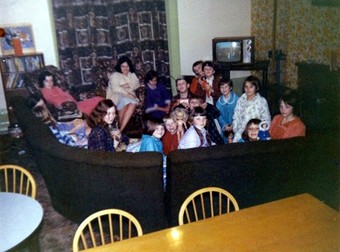 |
The division of the dining room created a
sitting room or social corner where the children could relax for an
hour or so, particularly before going to bed, to chat and watch
television. “It was a lot more cosy and I regarded it as a rather
important change”, said Pat Schmid. |
Staff changes were inevitable and there were quite a few in the first few
years. In l960, two years after I had been appointed, I was on the point
of leaving myself due to shortage of staff and the fact that I was only
seeing my husband one night a week when we met in Peterborough to go to
the cinema. A visit from Her Majesty’s Inspector solved this problem by
asking what could be done and I suggested, tongue in cheek, that my
husband could be fully employed with me. He would be a father figure,
particularly for the boys, and could do many odd jobs around the house,
transport the children to an fro at holiday times, and other similar
tasks. After a short interview, she was convinced and my husband Lou was
employed.
I then introduced the Auntie and Uncle regime at the hostel, an approach
for the children that seemed so much nicer than the previous Mr and Mrs,
and this family intimacy continued until we closed. For the first time, we
really began to feel like a family. Our own daughter saw much more of her
father than she would otherwise have done and life was a whole lot easier.
The staff now directly concerned with the welfare of the children
consisted of matron and house father, a deputy matron and a children’s
assistant. Various changes to the domestic staff also meant a lot more
stability because staff members became more likely to stay and a new cook
became permanent. I was always aware of the motto that a happy staff makes
for a happy household and that was now becoming a fact of life at the
Bourne House.
THE CHILDREN
The hostel was run by the county education
authority and so it was imperative that all of the children had to go to
school. Sadly, the boys sometimes had to leave when they were eleven. We
therefore had no senior boys. On the other hand, the girls could stay all
the time they remained at school. This meant that we had youngsters of
five years and upwards of both sexes and girls of 15-16 years old. This
tended to bring out the mothering instinct in some of the older girls who
often took responsibility for their favourite little ones.
To say why the children were with us and not at home would fill up more
space than I have here. Apart from those that were deemed to be in the
care of their local authority, the children were sent to us by the child
psychiatrist. There were often referred by social workers and all were
with the full agreement of the parents. Some of the parents were openly
rejecting, preferring to accept the policy of out of sight out of mind,
and never contacted us unless they were forced to.
Others were quite the opposite, writing letters and visiting regularly.
The latter were likely to be the parents of what we termed our short stay
children, among them truants, bed wetters, soilers, elective mutes,
aggressive and over timid children. Some had a combination of problems
while others just had a problem with their weight that often turned into a
refusal to go to school so that solving the problem automatically solved
the teasing which had created the reluctance to attend.
Our child psychiatrist, Dr Richardson, in the early days, would visit once
a week, usually on a Saturday morning. Occasionally he would see
individual children, particularly if I had had problems with someone
during the week. But mostly he would have a small group and observe how
they interacted when playing with the sand and water etc.
The older girls sometimes got out of hand and there would be a frantic
ringing of the bell, placed under the rim of the desk for emergencies, and
it was always Auntie Pat to the rescue. Sometimes he would come outside
and see what the young ones were building in the sandpit. I remember one
little boy proudly answering “An industrial estate, doctor.” Whatever
happened to simple sandcastles?
Dr Richardson had a friend, another psychiatrist, who lived and worked in
Bristol. He apparently had children he found impossible to place in his
area and sent several to us over the years, one of which I was able to
follow up in later years, and still keep in touch to this day.
The social workers played their part, advising parents and giving us
feedback about how the children fitted in at holiday times. Most of the
children returned home for the school holidays but there were about half a
dozen who could not for varying reasons. Sometimes there was complete
rejection from the parents or the parents had separated or were in prison.
Sometimes, it was arranged for these children to go to a home run by the
social services department, such as Ivo Cottage at Spalding, but they
seldom stayed for long and frequently proved to be too rebellious. The
social workers on the whole were excellent and kept us up to date with
conditions at home within the family. They also visited the children
within the hostel and took back reports on their progress.
ACTIVITIES
Daily activities were many and varied and
often depended on the talents of the children we had at that time. Once or
twice a week we had handicrafts when two young women came in and helped
them produce a variety of attractive, if simple, items. Some of these,
when finished, went home to parents who were often unaware of the
abilities of their children and were pleasantly surprised at what they
could do.
A favourite pastime was rounders on the back lawn, especially when Uncle
Lou joined in although it tended to get a little boisterous at times.
Once, in his enthusiasm, he knocked down a small girl and she came up with
a mouthful of mud but after going indoors and being cleaned up, she
insisted on going out and continuing with the game. But Uncle Lou did get
a rounder which was the thing that mattered most.
Cricket too, became a popular summer sport. One boy really fancied himself
to the extent that he always wore whites when turning out for a game.
Uncle Lou was also usually in evidence and when knocking the ball over the
fence onto the patrol cars in the police station next door he was quite
clearly seen passing the bat surreptitiously to one of the smaller boys to
avoid blame. One of the fathers, an aeronautical engineer, whose
nine-year-old lad was with us for a short time largely because he was
unable to relax and do those things that boys of his age usually do,
surprised everyone by coming over and taking the bat for a while. He
greatly enjoyed it and often visited and played with the children.
|
Mothering
was encouraged. The older girls tended to look out for the younger
children and helped care for them when dressing in the mornings, at
meals, at bedtime and whenever there was an outing. It was not only
beneficial for the youngsters but it also gave the girls a sense of
family responsibility that would be so important in later life when
they married and had children of their own. The accent was on
relationships and this was a perfect example. |
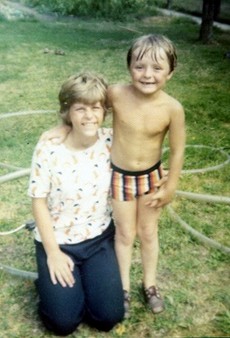 |
When it was fine, we often had tea on the lawn and these picnics were
greatly enjoyed by all. In summer, swimming in the town pool was also a
must and again Uncle Lou, being a keen swimmer, came into his own, getting
up early and taking those children who were really keen for an early
morning dip down to the Abbey Lawn. This was particularly beneficial to
the bed-wetters and actually cured several, the rule being “No wet bed –
swimming with Lou; wet bed, sorry no swim”. Almost all the children
learned to swim, which in itself was a confidence booster.
At weekends, the children attended Sunday School that was only a stone’s
throw down the road at the Baptist Church in West Street. At first, this
was not very beneficial due to an elderly, well meaning fire and brimstone
pastor who literally put the fear of God into some of the younger members
of the congregation. Later however, a young pastor and his schoolteacher
wife became a considerable asset and several of our boys joined the Boys
Brigade at the church and greatly enjoyed it and being able to play the
piano, I found myself filling in when the organist was away.
Sunday afternoons were often spent wandering through Bourne Wood or
picnicking at the Wellhead when the weather was clement. In winter,
especially when the snow fell, Wellington boots and scarves were the order
of the day and invariably a snowball fight ensued during our outings.
The older girls either joined in with the younger ones or went about their
own business, the only house rules being that they were required to say
where they were going and had to be back for mealtimes. Several little
girls went to dancing classes and proved to be quite talented. This was
useful when it came time for our annual pantomime. Every Christmas, we
practised hard and according to the amount of talent available in the
house at the time, we staged a production such as Snow White, Red Riding
Hood, Dick Whittington, Pinocchio, Aladdin, a nativity play, Cinderella
and the Pied Piper of Hamelin.
Besides the pantos there were children who performed individually, or in
groups. I remember the boys doing the popular skiffle song My Old Man’s a
Dustman and another popular number of the time, She Wears Red Feathers on
her Hula Hula Skirt, all great fun. Of course, the children were not able
to learn a full length, professionally written script so I would write a
story line to suit those we had in residence at the time. I think the best
one we ever did was the Wizard of Oz because we had a little girl of ten
who could dance and was chosen for the Judy Garland role of Dorothy while
a group of talented girls, one who was attending Bourne Grammar School,
played the tin man, lion and scarecrow beautifully.
The singing was excellent too. This was exceptional however and often I
was struggling to write simple couplets that would be easy to learn. The
elective mutes, those children who would not talk but could, were always
given a part and it was assumed that they would speak their lines when
they were dressed up in disguise and it always worked. Teachers who were
invited to attend the performance were often amazed at hearing them speak
for the first time.
Patsy was able to speak but refused to because she had a slight
imperfection and lisped. Marion also refused because her mother had a
severe speech defect. Both girls were talking normally by the time they
left us although I remember feeling extremely severe when I said everyone
must say “Please” if they wanted to go to the cinema. Marion would not say
it so she did not go and so the other children put a lot of pressure on
her and also thought me very hard. Within a few days however, she was
talking and soon the problem was to keep her quiet.
Besides the pantomimes we had a large tea party at Christmas when all the
children could invite two people. These could be adults or children and
some of their favourite teachers from school were often included. This
meant a sit down meal for around sixty people and the kitchen staff and
domestic assistants worked very hard to provide this. After the meal,
everyone went into the playroom that had been divided into a space for the
audience and a stage curtained off. We were fortunate in having some wings
and backcloths given to us and made full use of them.
Officials from the Sleaford office, schoolteachers, friends from the
church and around town, such as the librarian, were invited to be
entertained. It was a way of showing some appreciation to the people who
had helped the children throughout the year. Parents attended the final
dress rehearsal that was always held on the last Sunday afternoon before
the party. The children went home for Christmas soon afterwards with the
exception of the few that remained behind for various reasons although
they seldom minded being left because they knew they would get special
treatment, either at the hostel or at Auntie Pat’s bungalow at Baston.
Holiday times generally were a problem due to the fact that certain
children could not be placed. We were greatly assisted by local groups
such as the Round Table, the Licensed Victuallers’ Association, the Young
Farmers’ Association, and others, who funded a weeks’ holiday at a chalet
or caravan at the seaside in the summer. They also gave us a small
circular pool in the garden that was greatly enjoyed, especially by the
children who were left behind.
RELATIONSHIPS
Life at Bourne House was all about
relationships. It was essential that there should be a cheerful and happy
atmosphere generally. This was brought about by the interaction of staff
with staff and passed on between staff and children. The domestic helpers
were very important as the children often formed relationships with them.
The full time domestic in particular was essential as she was often used
as relief in the absence of a member of the children’s staff. We even gave
one such member of staff the title of Auntie Mary because she was so close
to the children. There had to be a relaxed, friendly, and dare I say,
loving atmosphere in the house in order that the children could regard it
not just as a place of containment but also as a home with all that this
implied.
We had about 225 children during my time there and to me, the most important thing we did, or tried to do, was to show them a
better way than so many had been accustomed to before they came to us.
This was particularly important in the case of the older girls as we had
them long enough to be able to shape their lives and sow the seeds that
might make them better mothers. I was lucky enough to be at Bourne House
long enough to see the fruits of my labour and feel a certain pride that
at least some of my girls, as I called them, have married and had families
who have been loved and cared for in the way their mothers were at Bourne
House.
I cannot close this account of caring without mentioning my two
longest-serving children’s staff, Joan Little and Kath Dolby, both
honorary aunts. They stayed longer than any of the others and provided
stalwart and faithful service which I know the children appreciated and so
did my husband and I. They especially were extremely helpful when my
husband or I went away on in service courses, which we did occasionally,
and it was good to know that things would continue to run smoothly in our
absence. There were many people who deserve our thanks for their help in
running Bourne House, a place which many consider achieved many, if not
all, of its aims.
|
A NOSTALGIC RETURN |
|
Pat Schmid and her husband Lou made a nostalgic
return to Bourne in August 2006 from their retirement home in Spain.
She is now 76 and he is 80. They were surprised at how much the town
had been changed by expansion but when they took a look at Bourne
House, the memories came flooding back and both remembered the happy
and the heart breaking years they had spent there but never
regretted it for a minute. |
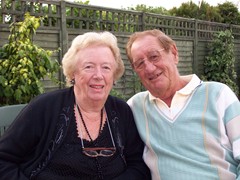 |
|
MEMORABLE MOMENTS |
|
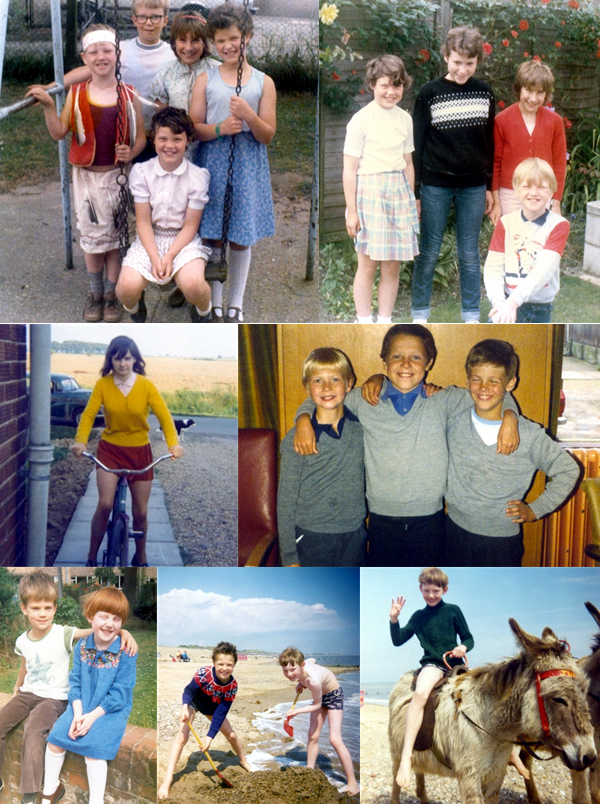 |
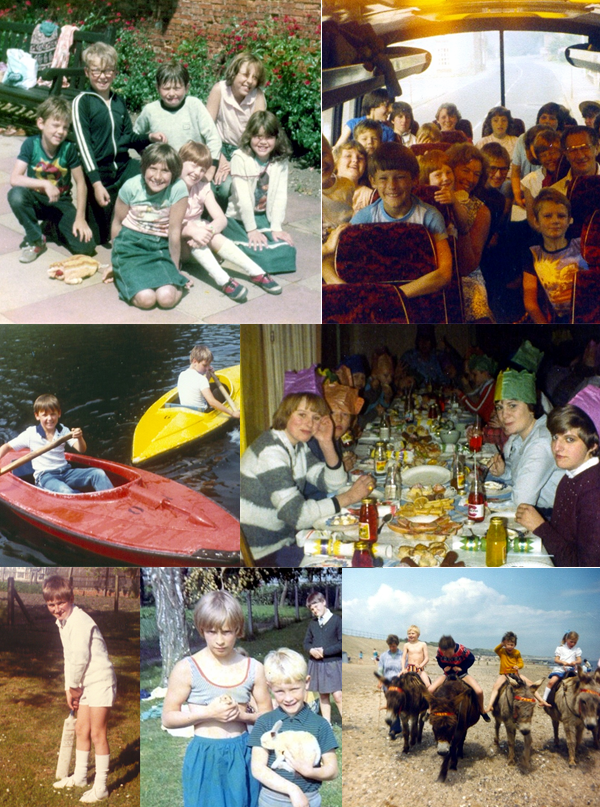 |
Note: Pat Schmid died in Spain following a heart
attack
on Tuesday 15th April 2014, aged 83.
See
The woman who was auntie
to 200 children
REVISED APRIL2014
Return to Bourne House Hostel

Go to:
Main Index Villages
Index
|





